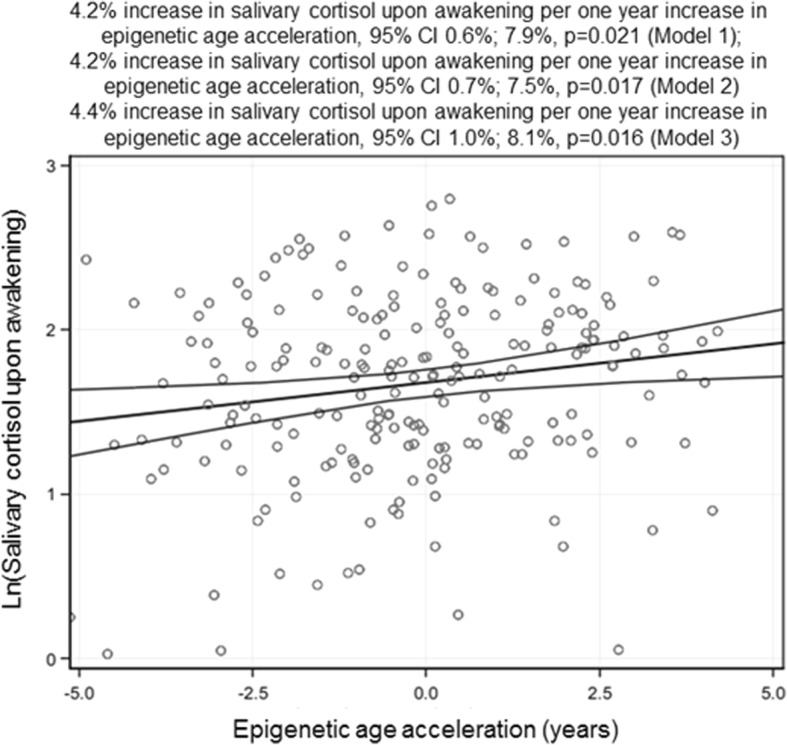Fig. 2.

A scatterplot with a regression line and 95% confidence intervals showing associations between epigenetic age acceleration and salivary cortisol upon awakening in 11.0–13.2-year-old adolescents. Epigenetic age acceleration is calculated as the residual from a linear regression where DNA methylation age is regressed on chronological age and adjusted for six cell types. Numbers showing percent increase in salivary cortisol upon awakening per 1 year increase in epigenetic age acceleration and 95% confidence intervals are derived from generalized linear models with Gaussian reference distribution and adjusted for three multidimensional scaling components from genome-wide data, adolescent’s sex, and time upon awakening (model 1); and model 1 plus birth weight, gestational age, parity, delivery mode, maternal age and body mass index at delivery, maternal smoking, alcohol and glycyrrhizin in licorice use during pregnancy, and highest achieved education of either parent in adolescence follow-up (model 2); and model 2 plus body-mass-index-for-age SD score in adolescence (model 3)
